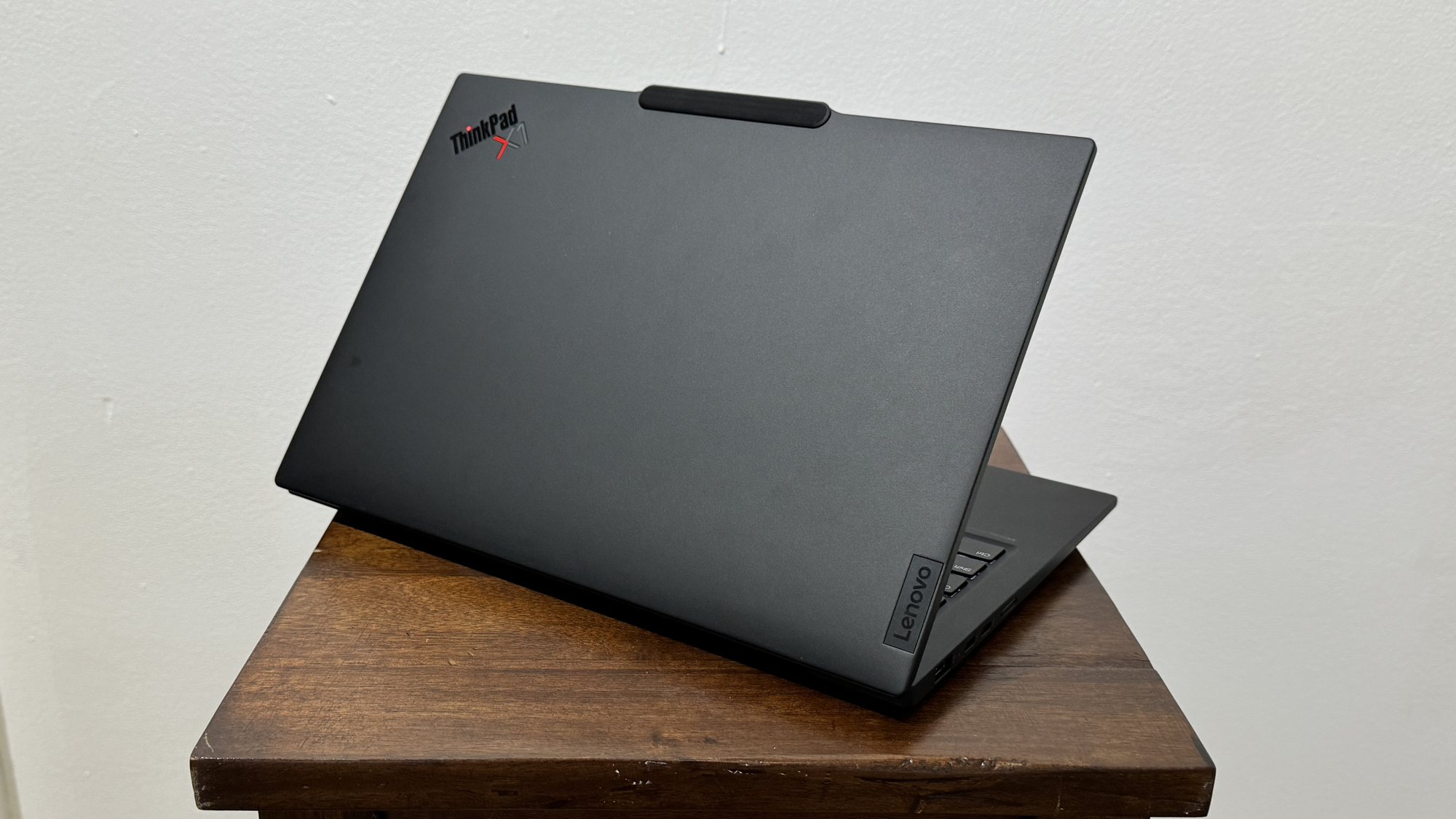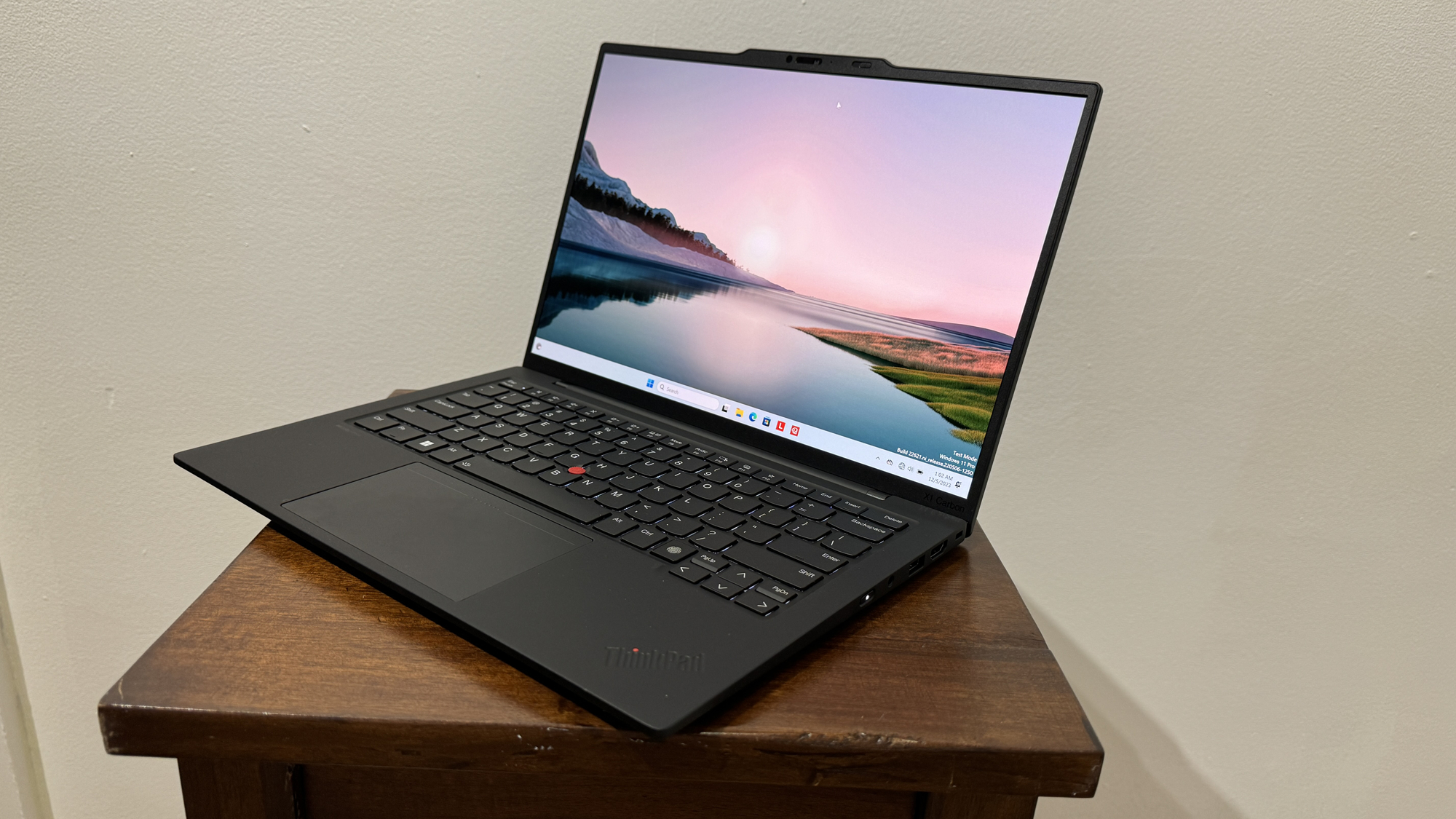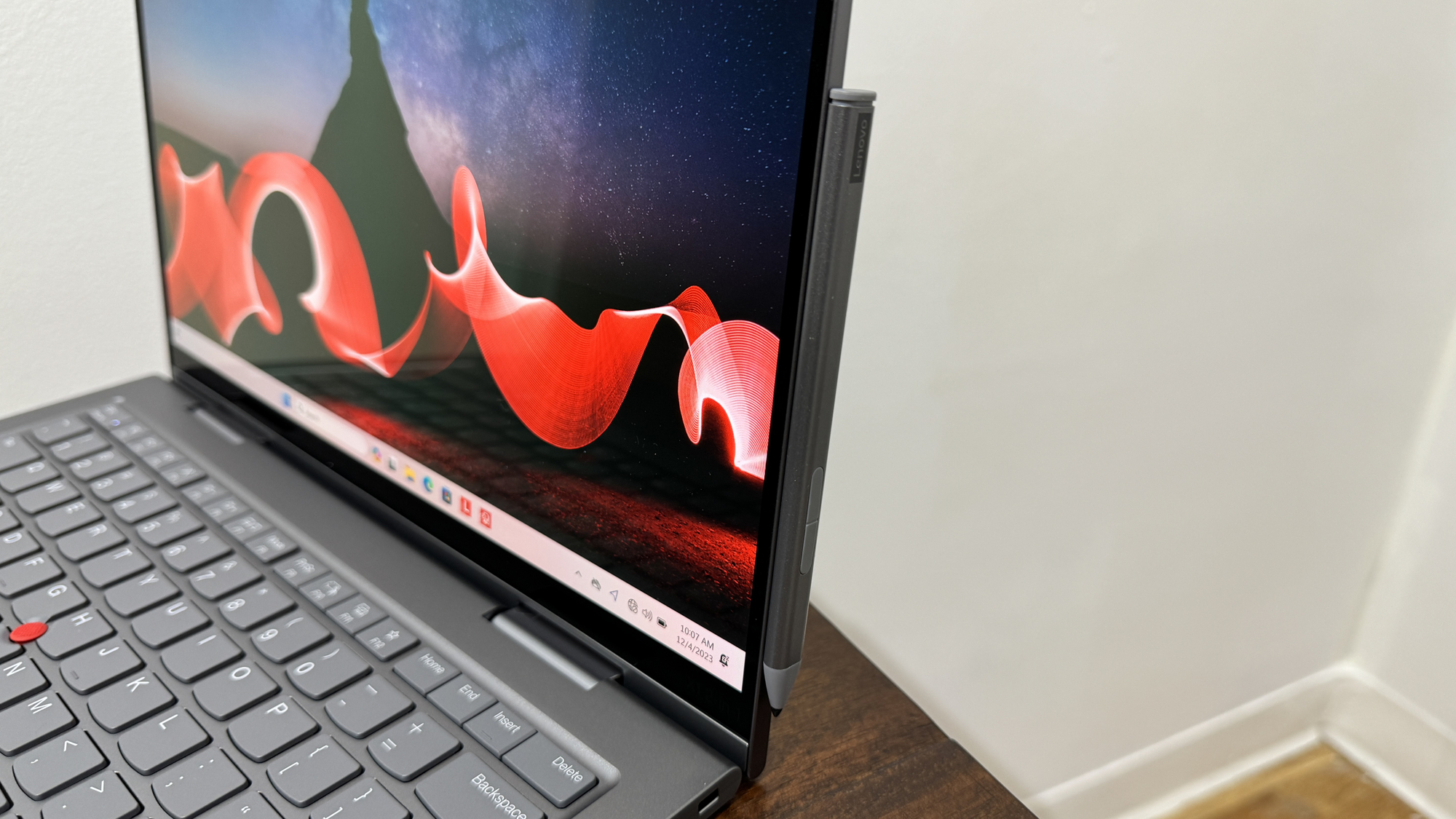Lenovo's New ThinkPad X1 Carbon is Smaller, Lighter, and AI-Ready
The ThinkPad X1 Carbon (Gen 12) is powered by Intel's new Meteor Lake CPUs.

With the launch of Intel's new Core Ultra processors (codenamed Meteor Lake), OEMs are announcing a slew of laptops powered by the AI-friendly chips. Lenovo's flagship productivity laptops -- the ThinkPad X1 Carbon and X1 2-in-1 (formerly X1 Yoga) -- are getting refreshed with Meteor Lake CPUs, and the chassis design is changing to give both models smaller footprints and a little less weight.
I had a chance to see both new ThinkPads at a Lenovo briefing last week and, as someone who owns an 8th Gen X1 Carbon and has used all the recent models, I was immediately struck by the X1 Carbon (Gen 12)'s smaller dimensions. The 14-inch screen, still a 16:10 aspect panel, looks like it is closer to the deck and the palm rest seems ever-so-slightly shorter.
Above the screen sits a metal protrusion with the webcam / IR camera which Lenovo calls the "communication" bar; this feature debuted on 2023's ThinkPad Z series laptops, and you can use it as a grip to lift the lid when the system is closed. The power button is now located on the right side of the laptop -- a benefit for those who want to turn on the system while its lid is closed.


According to the spec sheets, the new generation's chassis measures 12.31 x 8.45 x 0.59 inches (312.8 x 214.75 x 14.96mm) versus the Gen 11's size of 12.43 x 8.76 x 0.60 inches (315.6 x 222.5 x 15.36 mm). That's 0.13 inches less width, and 0.29 inches shorter depth to go with a very modest z-height reduction of 0.01 inches. The good news is that there's till room for two USB Type-A ports, an HDMI out port and a 3.5mm audio jack.
ThinkPad X1 Carbon (Gen 12) / X1 2-in-1 (Gen 9) Specs
| Component | Lenovo ThinkPad X1 Carbon (Gen 12) | Lenovo ThinkPad X1 2-in-1 (Gen 9) |
|---|---|---|
| CPU | Up to Intel U7 | Up to Intel U7 |
| Graphics | Intel Integrated | Intel Integrated |
| Memory | Up to 64GB DDR5-6400 MHz LPDDR5x | Up to 64GB DDR5-6400 MHz LPDDR5x |
| Storage | Up to 2TB PCIe Gen 4 | Up to 2TB PCIe Gen 4 |
| Display | Up to 120 Hz 2.8K OLED | Up to 120 Hz 2.8K OLED |
| Networking | Up to Wi-Fi 7, option 4/5G | Up to Wi-Fi 7, option 4/5G |
| Ports | 2 x USB-C (Thunderbolt 4); 2 USB-A (5Gbps); HDMI 2.1; 3.5mm audio | 2 x USB-C (Thunderbolt 4); 2 USB-A (5Gbps); HDMI 2.1; 3.5mm audio |
| Camera | Up to 8MP + IR | Up to 8MP + IR |
| Battery | 57 Wh | 57 Wh |
| Operating System | Windows 11 | Windows 11 |
| Dimensions (WxDxH) | 12.31 x 8.45 x 0.59 inches (312.8 x 214.75 x 14.96mm) | 12.31 x 8.57 x 0.61 inches (312.8 x 217.65 x 15.49mm) |
| Weight | 2.42 pounds (1.09kg) | 2.92 pounds (1.32kg) |
I was concerned that the shorter deck would cause my wrists to dangle off the edge while typing, but I had a chance to spend a couple of minutes with a sample X1 Carbon and there was still plenty of room for my hands on that palm rest. To my disappointment, the carbon fiber material on the X1 Carbon (Gen 12) isn't soft-touch or rubbery, which I find comfy, but is plain matte black. Lenovo told us that it's going with a matte material to avoid fingerprint stains.
On the bright side, the keys have the same excellent smile-shaped curves, deep travel and snappy feedback that we've come to expect from a ThinkPad. Lenovo has made a small change by adding small tactile bumps to a few keys -- volume up / down, insert, Fn and Enter, to help visually impaired users locate them more easily. I can see this also helping touch typists like me who dislike looking down at the keyboard.
In a major improvement, the new X1 Carbon and X1 2-in-1 will pull up a quick menu when you double-tap on the TrackPoint. A Lenovo rep said that future software improvements could allow you to assign more custom features to the TrackPoint tapping. For those who don't like the little red nub (and why wouldn't you?) there's a generously-sized glass touchpad. You can also opt for a haptic touchpad, but that means you won't have dedicated buttons for the TrackPoint (you'd have to tap the top of the haptic pad to click with TrackPoint).
Stay On the Cutting Edge: Get the Tom's Hardware Newsletter
Get Tom's Hardware's best news and in-depth reviews, straight to your inbox.
On the X1 2-in-1, the stylus is now larger and attaches magnetically to either the lid or the side. The prior-gen models had small styli that went into a tiny "garage" on the right side.



The screen on both X1 laptops is the same 14-inch, 16:10 size we're used to and the base resolution for both will remain as 1920 x 1200. And the top option will remain a 2.8K OLED panel, but the high-end panel will also have a 120 Hz refresh rate, the first time a ThinkPad X1 Carbon has had a high-refresh-rate display. The camera that sits above the screen is going to a higher resolution, with the ability to capture images at up to 8 megapixels (that's 4K, versus 1080p on the prior gen).
On the inside, the layout of the X1 Carbon has been redesigned to provide better cooling as, instead of having two fans right next to each other and blowing all the hot air out of one spot, the fans are spread out.

The RAM options stay pretty much the same as the last generation, with 16, 32 and 64GB DDR5 options running at up to 6400 MHz. The SSD remains a PCIe Gen 4 NVMe drive with capacities of up to 2TB. And the battery is the same 57 Whr unit.
However, there's good news for fans of high-speed Wi-Fi, as the X1 Carbon will come up "up to Wi-Fi 7." It's not clear from the press materials we got whether Wi-Fi 7 support will be standard on the base model or an upgrade option.
Intel Meteor Lake Means Local AI
The real star of the show, spec-wise, is the new Meteor Lake processor, which will be available in a variety of SKUs ranging from U5 to U7 (what would have been known as Core i5 or Core i7). All models will have a neural processing unit (NPU), a first for Intel.
The NPU is designed to make running local AI applications feasible where today such workloads really need a discrete GPU. So you should be able to do things like creating images with Stable Diffusion, transcribing text to speech, or analyzing all of your activities with something like Rewind.Ai.
Many AI tasks like these currently run in the cloud, but using cloud services sometimes costs money (and could cost more in the future), requires Internet and shares your data with a third party who could use it in ways you wouldn't like. Today, when you want to ask Microsoft Copilot or ChatGPT to do something, they must send your request to a company's servers. Soon, many more AI tasks could be handled locally.
What remains to be seen is how quickly and well software makers will optimize their AI apps for Meteor Lake's NPU. You can get really strong AI performance today if you use a discrete Nvidia graphics card with lots of VRAM, because apps are optimized specifically for CUDA. Will these same apps be made to work as well with an Intel NPU and will the NPU be able to offer inference performance anywhere near what a discrete graphics card does? We'll have to see.
Lenovo's ThinkPad X1 Carbon (Gen 12) is set to start shipping this month in limited configurations (with non-vPro CPUs), for a starting price of $2,989. More configurations with vPro CPUs will come next year. The ThinkPad X1 2-in-1 will start shipping in March 2024 with a starting price of $2,639.
